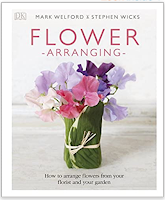Grow A Flower Garden 101
-
23.11.20
Become your own home florist to fill your home with flowers and foliage all year round. In this ten-part guide I will show you how to start a flower garden, what to consider, the best flowers to get you started and how to fill your home with flower arrangements, and sharing on-trend ideas. With tutorials for DIY creative flowers and how to throw your own flower party for friends and family to enjoy together.
I love to pick fresh flowers in the morning and gift an abundance to friends and family. Although I do love to visit flower farms for their pick your own events!
This guide isn’t for experts or flower farmers but for anyone who like me who wants to see flowers around their home all year and who enjoys gifting flowers. If you already grow vegetables, add a few flowers to your vegetable patch and the flowers will attract more pollinators to your vegetables.
A flower cutting garden, it is an area designated to cut flowers to fill your home, it might not be the prettiest place in the garden if you cut them all. But cut as you need flowers and they will keep coming back again and again.
What to consider when setting up your area?
You can start a cutting garden in flower pots, wooden crates but the best place is a patch of garden, preferably in full or partial sunshine. The area will need to be weed-free and as the flowers need to recover from all the snipping, organic matter is good to improve water retention and drainage. Work in several inches of compost or leaf mold before planting.
Flowers can get windswept quickly so do ensure where you can that they are placed away from the windy area of your garden. I have been known to build barriers occasionally with bins as the wind moves towards the east of our house.
Feeding - as flowers grow I would recommend a liquid fertilizer as this can give a boost to reproduction.
Layout - access is important to cut the stems easily and to attend to the plants as they need staking up as they grow.
Plant needs - I look at flower and foliage plant needs and group them together based on whether they need lots of water or not and when they will flower. This helps as it makes it easier to not over or under water plants.
Sequence of flowering - you could consider laying out plants by order of flowering, early season, midseason, and late season.
Annuals - often don’t last an entire season, so succession seeding can help. As you can sow seeds a few weeks apart for continuous flowers until the end of that plants flowering season. Remove faded flowers and replace if space is limited to keep your flowers fresh. (More on flower and foliage to plant for a tried and tested flower garden in part 2).
Mulching - helps the soil to retain moisture in summer and rain to penetrate the soil in winter it also helps prevent weeds from growing. Mulching also helps protect the roots of plants in the winter. I haven’t always mulched but I do now as it does help the plants and makes weeding and watering easier.
























































